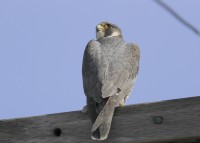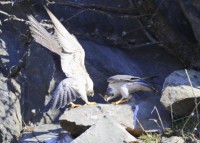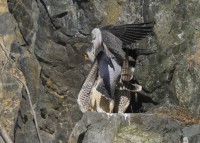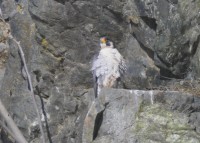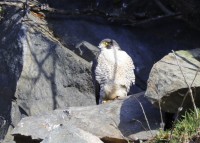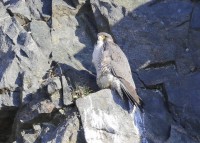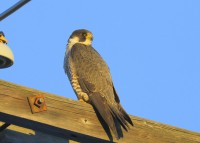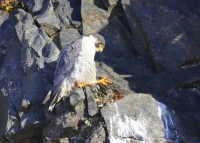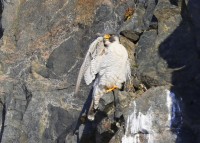Peregrine Falcons: Woburn copulation
March 28, 2017 in Peregrine Falcon Woburn
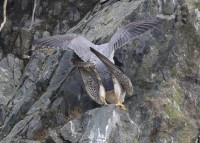 During copulation the female is pitched forward, making an angle of about 45 degrees with respect to the perch. The copulation wail is clearly heard nearby. As the male mounts, the female spreads her wings at the elbow, about one fourth open. The tail, up and to the side, may be partly spread.
During copulation the female is pitched forward, making an angle of about 45 degrees with respect to the perch. The copulation wail is clearly heard nearby. As the male mounts, the female spreads her wings at the elbow, about one fourth open. The tail, up and to the side, may be partly spread.
The male flap his wings constantly during copulation, maintaining an upright posture with the neck extended and best in a curve. the male may give a burst or bursts of the chitter vocalization just before, during, or after mounting. The entire copulation process may last as long as ten seconds, and then the male departs.
